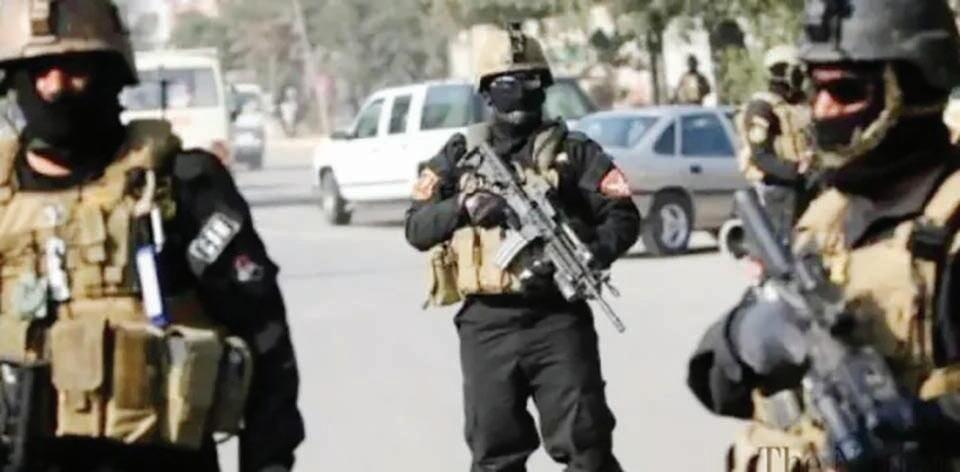

GLOBAL OUTCRY AS ISRAEL MOVES TO TAKE CONTROL OF

C h i n a’s Z- 1 0 M E g u n s h i p s
Ministry of National Defense confirmed that China is committed to sharing its defense technology with friendly nations like Pakistan He emphasized that China-Pakistan defense cooperation is aimed at maintaining regional and international security and stability rather than targeting any third party This development represents a key milestone in the strategic partnership between Pakistan and China, as both nations continue to enhance their defense and security collaboration


ISLAMABAD s ta f f r e p o r t The National Assembly (NA) secretariat removed on Friday three Pakistan Tehreek-e-Insaf (PTI) leaders from key parliamentary posts following the dis-
Gul
leader, and Ahmad Chattha was removed as
A
anti-terrorism court (ATC) in Faisalabad
this month sentenced top PTI leaders to up to 10 years in prison in cases pertaining to the May 9 protests Opposition leader in the National Assembly Omar Ayub, opposition leader in the Senate Shibli Faraz Zartaj Gul MNA
Sahibzada Hamid Raza and former MNA Sheikh Rashid Shafiq were among the 108 PTI leaders convicted out of the 185 implicated in the cases while 77 others were acquitted The chamber allocated to the opposition leader was also taken back from the party The speaker informed the House of the members’ disqualification under assembly rules Consultations are under-
withdrew memberships of 15 standing committees from seven lawmakers belonging to PTI removing three senior leaders from key posts Sahibzada Hamid Raza was stripped of the chairmanship of the standing committee on Human Rights, while Zartaj Gul lost her membership in the same committee


Further recommendations include eliminating cross-subsidies in industrial power tariffs and removing advance taxes on exporters In addition the committees reviewed financial support options for exporters recommending simplified banking procedures and export financing at lower interest rates SAPM Haroon Akhtar Khan reaffirmed the government’s commitment to prioritizing export-led growth and acknowledged the challenges faced by exporters including high interest rates and costly utilities
The Punjab Agriculture Department has reported a cotton harvest of 609,000 bales as of July 31 for the 2025-26 crop year exceeding the 301 000 bales reported by the Pakistan Cotton Ginners Association (PCGA) According to the department s Crop Reporting Service (CRS), the 609,000 bales include seed cotton harvested in Punjab a figure that is based on internationally recognised methodologies These include randomised sampling GPS-enabled tools and realtime data monitoring, which ensure
transparency and reliability
The department s methods align with FAO-endorsed protocols and are said to reflect a more accurate picture of cotton production compared to the PCGA s data, which only accounts for cotton arriving at operational ginning factories
The Agriculture Department pointed out that the PCGA s figures do not account for cotton stored at the farm level, transferred to other provinces, or held by stockists Moreover, it was noted that persistent under-invoicing in recent years has distorted the accuracy of cotton reporting at ginning factories further exacerbating discrepancies
The department has requested the Federal Board of Revenue (FBR) to implement a more robust reporting system at operational ginning factories to ensure real-time, accurate data collection This move aims to enhance transparency, improve data integrity, and foster better coordination across institutions responsible for cotton monitoring Punjab s cotton harvest this year has seen considerable success with 781,000 acres planted, contributing to a total sown area of 3 16 million acres
The cotton campaign has benefited from extensive support, including contributions from universities agricultural interns and the private sector
99.5% of discontinued prize bonds redeemed, 0.5% pending with possible relief for eligible applicants, says minister
would review such cases on merit
deadline set for December 2024
Kiyani outlined three redemption options: converting the bonds into registered premium bonds investing in national savings schemes, or redeeming through bank accounts He noted that due to effective public awareness efforts Rs738 5 billion of the total Rs742 billion had been redeemed leaving only Rs3 5 billion (0 5%) unredeemed
Despite five years and several extensions, only a small portion remains outstanding,” he said “If a significant number of verifiable applications are received we may consider appropriate relief measures
Addressing concerns raised by Ms Kamran regarding overseas Pakistanis and those unable to meet deadlines due to special circumstances, Kiyani assured that the government
Ms Kamran emphasized that many overseas Pakistanis had prize bonds stored in personal belongings or lockers and unintentionally missed the deadline She urged the government to consider providing special relaxation for these individuals in the interest of goodwill and financial inclusion Kiyani reaffirmed that the broader objective of discontinuing and digitising prize bonds was to modernise the financial system and comply with international standards He also indicated that further details regarding the digital transformation of national savings and prize bond reforms could be presented to the House or relevant committees for further review
The minister assured that any future policy adjustments would be made transparently and through proper mechanisms
ments
the bill during which Qamar raised


From Bretton Woods to Blockchain
PR i m e m i n i S T e R Shehbaz Sharif has expressed concern at Pakistan s population growth rate of 2 55 percent and has said that a policy to control it was needed He expressed these views at a meeting in islamabad on Thursday to consider the subject of the challenges posed by population growth to planning now this is a favourite cop-out for bureaucrats: there are too many people, so existing facilities, like schools or hospitals are never enough Besides, a rapidly increasing population is outstripping the ability of the land to feed them while providing them jobs is a challenge The bureaucratic solution is to reduce the population’s rate of growth none have actually said so, but it almost seems they hark back to the good old days of less people actually, while a growth rate of 2 55 percent might seem very high, it represents a decline from the 3 percent figures of the 1980s That means existing population control programmes are working Progress is slow for two reasons First progress is bound to be slow unless there is a huge loss of population, through war, epidemic or famine Second, population growth only exists in the aggregate; basically it is about a couple deciding to have a child no one has ever refrained from having a child because of the national interest Couples have avoided having children for economic reasons but everyone feels entitled to two The most the state can do is ensure the availability of contraception There are also religious reasons why people avoid contraception Those reasons are not insurmountable, and need government attention One of the most interesting studies has been of immigrants with

TnaTOstyle alliance in the indo-Pacific has gained traction US assistant Secretary of Defence for indo-Pacific Security affairs ely Ratner ’s recent proposal for a Pacific Defence Pact a formal treaty-bound alliance among the USa Japan australia and the Philippines has revived the debate over whether the region requires a collective defence architecture akin to what emerged in post-war europe There is no question that the strategic environment in the region has shifted Bilateral arrangements such as the US-Japan alliance or the US-australia partnership have deepened minilateral formats like aUKUS and the Quad have also emerged, signalling a willingness among like-minded states to cooperate more closely on defence and security Yet, none of these mechanisms offers the kind of mutual defence commitment that naTO’s article 5 provides even so a naTO-style alliance in the indoPacific faces several obstacles One of the most fundamental issues is the diversity of political systems, security outlooks, and threat perceptions across the region For example, for Tokyo, Beijing’s increased presence around the Senkaku islands is an immediate concern For Canberra the focus is broader encompassing cyber threats political interference and China s influence in the South Pacific manila, after years of policy swings, is only now reasserting its maritime rights Washington, for its part, sees Taiwan as a central concern in short the threat is not universally perceived and this complicates any effort to establish a collective defence mechanism with clear redlines and binding obligations
Furthermore, the credibility of any collective defence arrangement would come under immediate scrutiny it is not at all obvious that all members of a hypothetical alliance would be willing or politically able to respond militarily to a contingency involving Taiwan or other disputed maritime territories The ambiguity surrounding who would act when and under what conditions could ultimately undermine the very deterrent value that such an alliance seeks to establish additionally naTO itself is showing signs of strategic fatigue Disagreements over burden-sharing persist and europe remains uneasy about the reliability of US support in
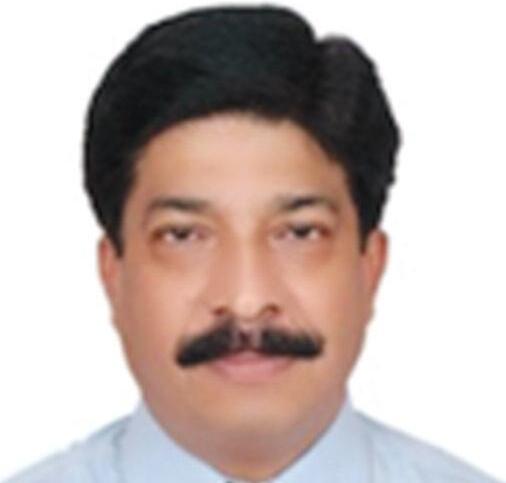
creation The risks are not hypothetical The collapse of Terra-Luna in 2022 demonstrated how instability in one major stablecoin can trigger contagion across markets Schaaf echoed these concerns warning that a large-scale run on a widely used token could lead to liquidity shortfalls

now, with stablecoins, those dollarpegged crypto tokens, reshaping the financial landscape as Jürgen Schaaf, an advisor to the european Central Bank warned on July 28 the rise of these instruments risks dollarization of the eurozone a phenomenon that could kneecap the eCB s monetary sovereignty This isn t just a european problem; it s a global wake-up call The USa is leveraging stablecoins to harvest capital worldwide, and the rest of the world needs to decide: adapt or be subsumed Stablecoins- cryptocurrencies pegged to assets such as the dollar- are designed to maintain a stable value while enabling frictionless cross-border transactions on blockchain networks independent of traditional banking infrastructure as of July 28, the global stablecoin market has surged to $250 billion, with dollar-linked tokens accounting for 99 percent of that volume largely dominated by issuers such as Tether and Circle according to Financial Times reporting By contrast euro-pegged stablecoins remain a marginal presence totaling just €350 million This imbalance reflects more than market preference- it underscores the strategic entrenchment of dollar dominance in the emerging digital financial architecture
Jürgen Schaaf, in a recent european Central Bank blog post warned that widespread adoption of dollar-backed stablecoins within the eurozone could erode the eCB s monetary autonomy if such instruments begin to dominate transactions savings or settlement

decisions made in Washington not Frankfurt Yet the foundation of this emerging digital currency ecosystem remains precarious in a June 24 report, the Bank for international Settlements described stablecoins as “poor money ” citing their lack of central bank backing inadequate safeguards against illicit activity and limited capacity to support credit
Ukraine With the re-emergence of Trump-era scepticism towards alliances, it is difficult to imagine Washington committing to a new security framework of comparable scale in the indo-Pacific moreover a formal alliance could provoke the very behaviour it seeks to deter Beijing already views efforts like aUKUS and the Quad as part of a containment strategy moving towards a treaty-bound alliance would likely confirm that perception, potentially accelerating China’s military modernisation or prompting it to act pre-emptively before such an alliance is fully operational
There is also the matter of regional buy-in Southeast asian states have consistently resisted bloc politics, preferring instead to hedge, balance, or bandwagon depending on circumstances For many of them being forced to choose sides would be unwelcome and possibly destabilising Therefore strategic choices in the aSean are not divorced from economics The USa and China remain commercially intertwined, and key US allies, including Japan, australia, and the Philippines, rely heavily on trade with Beijing which inevitably tempers robust security alignment
Furthermore naTO s focus on military solutions has often delivered mixed results as seen in afghanistan and Libya Yet that same mindset is now being projected onto the indoPacific, where it risks crowding out political solutions and ignoring urgent regional needs like infrastructure climate resilience and digital governance as the region becomes more securitised space for inclusive development also shrinks
Though not a direct actor in the indo-Pacific alliance web, Pakistan is deeply tied to China and increasingly linked to regional maritime trade and connectivity through CPeC any hardening of alliance politics could deepen its strategic alignment with Beijing while also limiting space for independent diplomacy Pakistan should maintain a balanced stance, avoiding en-

tanglement in conflicts that could compromise its foreign policy Therefore, from Pakistan s standpoint, the securitisation of the indo-Pacific through the alliance model is both unnecessary and destabilising
india is another major indo-Pacific power with growing regional ambitions and any move towards a formal alliance will bring india s role under scrutiny which is already finding it hard to maintain its self-claimed strategic flexibility no matter on which side of such an alliance india stands, it will have consequences for the region particularly Pakistan Following the events of 6–10 may it is important to critically assess india s military capability which has come under scrutiny even if they have strategic flexibility, their strategic capability remains limited
The indo-Pacific does not need a replica of naTO; it needs a security architecture that reflects its unique geopolitical realities Formal alliances may signal strength but in this region they risk entrenching divisions and triggering counterbalancing Strategic fluidity not rigid blocs, is what keeps the region stable any effort to impose a fixed order must reckon with the costs of undermining the very balance it seeks to preserve
Faiza Abid is a research assistant at the Centre for Aerospace and Security Studies (CaSS) Lahore She can be reached at info@casslhr com
Emotion versus reason
T h e D r u z e - B e d o u i n e q u a t i o n a n d t h e i l
TH E recent escalation in Southern Syria demonstrates the fragility of peace constructed through coercion and resistance The region already plagued by deep-seated sectarian divisions, Israeli occupation, and Western dominance, has once again witnessed the collapse of the fragile peace that was anticipated following the fall of the Assad regime
The long-standing dynastic and minority Alawite rule which ended in December 2024 with the rise of the revolutionary movement led by Ahmad al-Sharaa, has ultimately failed to protect the rights of minority communities The renewed stability has reopened the doors for external actors to exploit Syria’s internal sovereignty using its people as shields for advancing their strategic goals as part of the broader Middle East The Druze and Bedouin communities are two significant sectarian groups in Syria, each with a deep-seated historical presence Tracing the historical trajectories of these communities offers a critical analysis of their contemporary escalation and deep-rooted tensions Understanding their distinct religious political and social evolution in the Middle East provides a valuable foundation for analyzing the root causes of their rivalry At the outset, the Druze are a distinct religious sect that emerged in the 10th century as a sectarian branch of Ismaili Islam However they do not identify themselves as Muslims because they do not believe in incarnation and are a closed-religious community, which does not accept converts, unlike Islam Today, approximately 1 million Druze reside within Syria with additional presence in Lebanon Israel and the Golan Heights an area annexed by Israel
Contrary to that Syria s broader demographic landscape consists predominantly of Sunni Muslims, making up 70 per cent of the population Whereas Alawites, an offshoot of Shia Muslims, constitute 3 percent of the total Syrian population The Druze community has persistently advocated for minority rights urging the Syrian government to uphold the inclusive and equitable policies for all sects
In the Sweida district, where the tensions have recently escalated the Druze form the overwhelming majority making up 80 per cent of the population followed by the Christian community whereas Sunni Muslims represent a minority Moreover, during 2015 and 2018, Druze militias assumed the role of net security provider in Sweida, particularly in response to the ISIS incursions In 2018 a devastating wave of attacks by ISIS took place resulting in the deaths of nearly 200 Druze people In the aftermath of these attacks tensions between Druze communities and Syrian forces escalated, as the community resisted forced recruitment into the military and state encroachment on Druze This period is considered to be a turning point in the Druze’s security posture as they began to defend their territory from external threats and internal state control The growing autonomy and defiance led to a critical shift in the regime’s approach A series of targeted assassinations of wellknown Druze figures was directly attributed to state operatives which intensified mistrust and a sense of separation Druze people started to believe that the Assad regime is not only failing to safeguard minority rights, but actively weaponizing the security vacuum to undermine Druze autonomy and bring the region back under state control In contrast the Bedouin tribes in Syria are predominantly Sunni Muslims and they have experienced long-standing tensions with the Druze community Traditionally, the Bedouin were primarily organized and en-

gaged in herding livestock across the Badiya the vast region of desert in central and eastern Syria The term Bedouin is derived from an Arabic word, badawi , which literally means “desert dweller” and historically refers to a person with a pastoral and nomadic way of life The conflict between Druze and Bedouin tribes escalated following a specific incident in the district of Sweida, when a Bedouin man set up a security checkpoint and assaulted a Druze vegetable vendor This act of violence sparked a series of tit-for-tat retaliations resulting in the detention of multiple Druze and Bedouin tribesmen Druze
people detained several Bedouin tribesmen and in response Bedouins detained and abducted several Druze community people, prompting counter-retaliation The situation immediately turned into violent armed clashes between two historic communities with further deaths of approximately 940 Syrian people Historically the complex interplay of sectarian tensions, land disputes, competition over minority rights, marginalization, and longstanding perceived grievances has contributed to Syria’s fragmented political and social landscape These underlying root causes continue to manifest sometimes in the form of revolution sometimes in the form of armed clashes and sometimes in the form of terrorism and external actors intervention, particularly in regions like Sweida, where fault lines between communities remain volatile Equally important the ongoing clashes in Syria continue to open doors for external actors to assert their influence and shape the country s future to serve their own strategic goals Among these actors, Israel comes first to pursue its regional objectives, often aligned with its expansionist ambitions as part of the broader Middle East In the aftermath of recent clashes between Druze and Bedouin Israel immediately struck the Syrian Ministry of Defence and declared support for Syrian Druze Ob-

servers suggest that Israel seeks to deepen its ties with Syrian Druze particularly to capitalize on the shared ethnic and religious identity as the Druze community serves in the Israeli military By projecting solidarity with Syrian Druze Israel appears to be cultivating goodwill among local militias, ultimately aimed at establishing a pro-Israel buffer zone in Southern Syria
Israel’s
However the
N o t t h e p r o m i s e d r e a l i s m w i t h I n d i a
Americ a is on the path towards a simultaneous confrontation with New D elhi, B eijing, and Moscow, the first and third of which were supposed to be in alignment with us to contain the second
Neither India nor the EU is c urrently in a position to dic tate terms yet The US buys around 18 percent of all Indian produc ts, making it the largest market for Indian goods The EU c annot func tion without Americ an militar y protec tion
I s r a e l s h o u l d e m b r a c e P a l e s t i n i a n s t a t e r e c o g n i t i o n a s a r e a l
c h a n c e f o r p e a c e
If Israel ac ts wisely, it will see the recognition of a Palestinian state as a chance to restar t a process that could bring real sec urit y and end the war


are essentially here used as sanctions) on India (for buying and selling) and on the EU (for buying) Russian oil because of a war no one in MAGA cares about (Ukraine) while the AsiaFirsters get nothing This is clearly absurd I am not sure if Lindsay Graham is advising the president
peace The Russians are actually winning on the battleground, the Europeans are unwilling to step up, and the Ukrainians are eager to scuttle any peace overture at the last minute Why are we trying to untie this Gordian knot instead of cutting it? In order to will that impossibility into existence the U S is currently aiming a trade war with one third of humanity America is on the path towards a simultaneous confrontation with New Delhi, Beijing, and Moscow, the first and third of which were supposed to be in alignment with us to contain the second No one likes a Napoleonic power Individually none of these states barring China is a peer rival Simultaneously however if we push them towards each other they ll join together to replace the reserve currency, sell bonds, and stop all pharmaceutical and rare earth trade to the U S Given the mood, the Europeans might offer to replace the U S outright If China invades Taiwan the U S won’t get any help from either India or Russia whether it be stopping fuel exports granting bases or sharing intelligence American products, especially weapons, are already taboo in a large part of Asia Arms control and vital tech proliferation efforts are obviously toast Australia is buying from Japan, and Indians are choosing European jets over American ones It will only tend towards a complete American autarky and isolation Listening to gerontocratic decision makers who came to prominence during unipolar days of the 90s has resulted in this weird hubris, which is completely unable to appreciate the long game and the broader strategic scenario The historic American grand strategy was to divide Europe and Asia What is happening now is the opposite pushing them all to bandwagon against us America First is giving away to America alone I am personally ambivalent on tariffs One can justify targeted tariffs on one country or rival Whatever this is defies logic The total capitulation of the administration to the worst of neoconservative hubris is outright bizarre One can still understand it through the lens of immigration prioritization but even then the admin is actually not doing anything to stop H1-Bs which is the only immigration issue demanding pressure on India Scuttling the H1-Bs (a sum total of under a million present in the U S so far) won t also deliver the massive working-class illegal deportation promise (20 million by some estimates) but that’s a matter for a different column What will happen is this The president will be mired in trying to solve the insoluble and the Republicans will lose the midterms The rest of the term will be lame-duck, and this will all be the vice president s legacy to defend in 2028 Whatever this “war of all against all” is, it is a long way from seeking “commerce, not chaos ”
The Israeli government can continue to fear recognition of a Palestinian state, or it can choose to embrace this oppor tunit y We are at a critical moment As more and more countries reach out for peace, Israel must not be the one to turn its back


mUNTAHA JABBAR




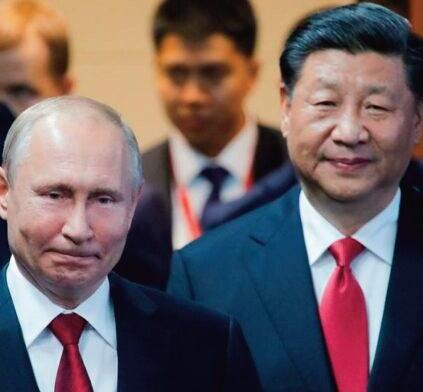
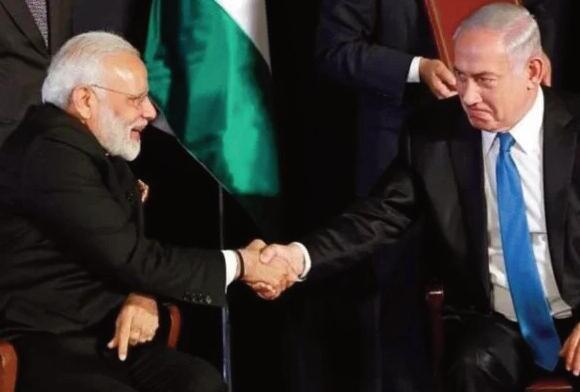

CM HIGHLIGHTS DEEPENING PAK-AUSTRALIA COOPERATION IN FAREWELL MEETING WITH HC

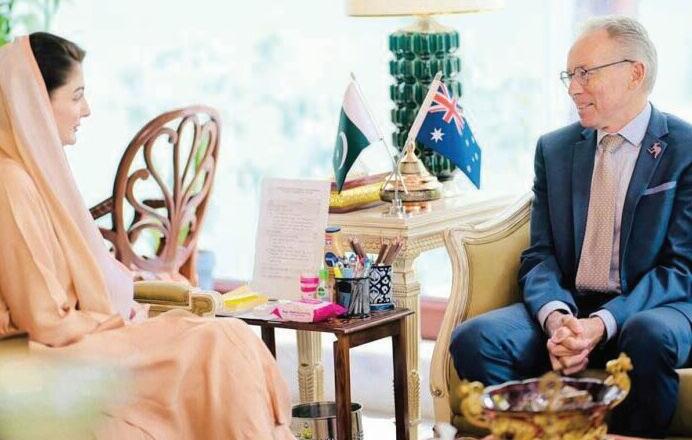
Nor wegian, Punjab police discuss tackling growing c ybercrime, digital fraud
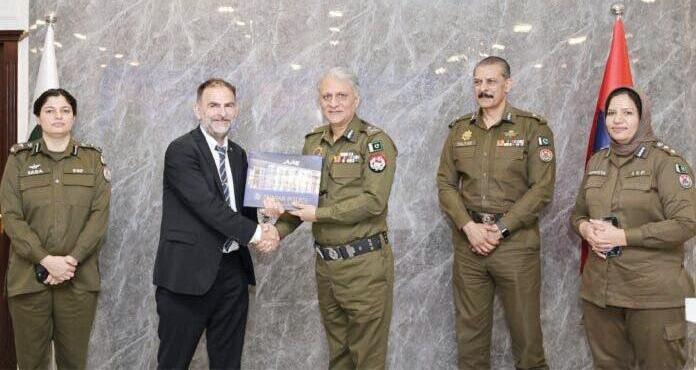


AIG Admin Dr Asad Ijaz Malhi, AIG Inspection Shaista Nadeem and SSP Investigation Rawalpindi Saba Sattar along with other senior officers were present in the meeting The delegation included Deputy Chief of Norwegian Police Ketil
Haukass, Norwegian Police Chief Superintendent Torkjeld Jevne, newly appointed Nordic Liaison Officer Borge Enoksen outgoing Nordic Liaison Officer Per Martin Bjartan and Advisor to the Nordic Liaison Officer at the Norwegian Embassy Sagheer Afzal, he added In the statement, the spokesperson said, “IGP Dr Anwar briefed the Norwegian police officers on the measures taken by Punjab Police for the security of foreign nationals He mentioned that close cooperation and strong ties existed between the Punjab Police and Norwegian Police for the elimination of international organized crime ” The spokesperson quoted the IGP that Punjab and Norwegian police were on the same page in combating terrorism extremism narcotics, organized crime, human trafficking, and money laundering “Training exchange with Norwegian police was also discussed to tackle the growing challenges of cybercrime and digital fraud the statement stated
Ambassadors join COMSATS’ Go Green Initiative
o r t The Commission on Science and Technology for Sustainable Development in the South (COMSATS) in pursuance of its Climate activities launched a Plantation Drive whereby Ambassadors of the
greener
Ambassador Turkmenistan H E Mr Atadjan Movlamov Dean of Diplomatic Corps, Ambassador Kazakhstan, H E Mr Yerzhan KISTAFIN; Ambassador Morocco, H E Mr Mohamed Karmoune; Ambassador Syria H E Dr Ramez Alraee Ambassador Yemen H E Mr Mohammed Motahar Alashabi planted a tree each in the Plantation Ceremony,held at COMSATS Secretariat, at the invitation of Executive Director COMSATS, Ambassador Dr Mohammad



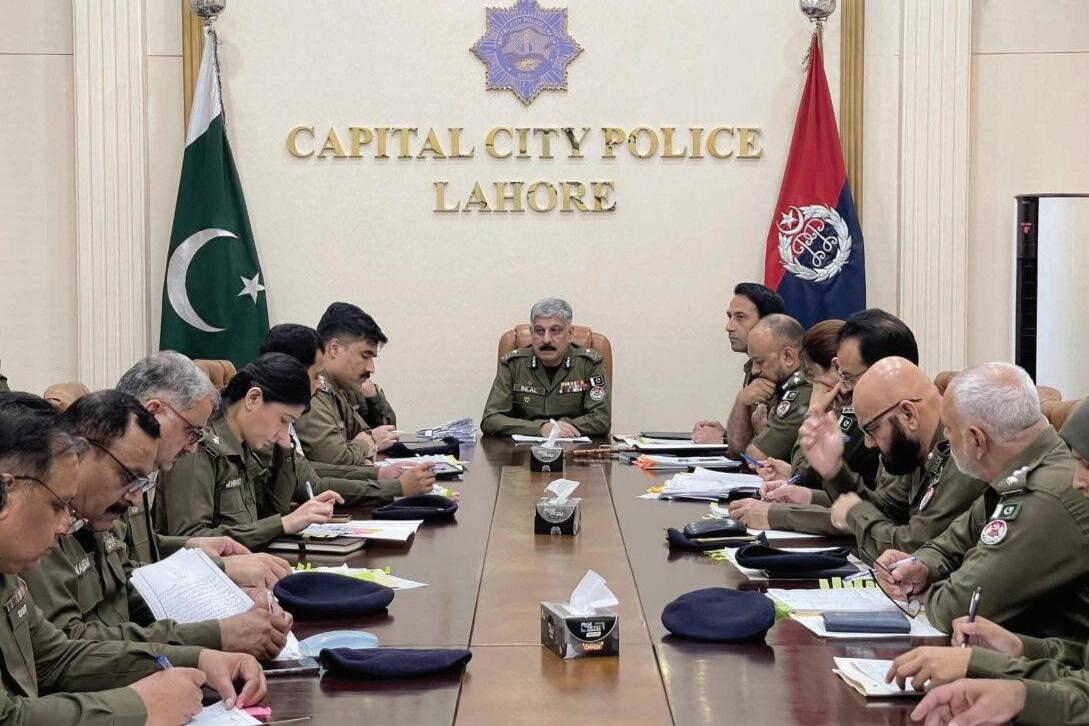

MODI AVOIDS MEETING TRUMP OVER POTENTIAL
WITH COAS MUNIR: BLOOMBERG
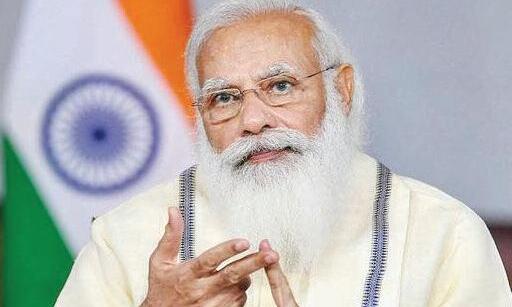
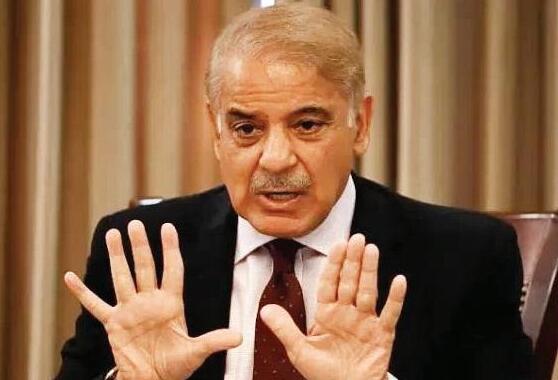

Tense

diplomatic tension arising from Trump hosting Pakistan s army chief General Asim Munir at the White House Modi s aides saw the visit as a tacit endorsement of Pakistan’s military, which India accuses of supporting militant groups
Following the phone call India reportedly noticed a shift in the tone of the White House with Trump publicly criticizing India, signaling a turning point in their relationship Modi’s response was firm, reinforcing India’s stance on trade issues, particularly regarding agriculture
The phone call also coincided with growing trade tensions Trump imposed a 25% tariff on Indian
goods, citing India’s continued imports of Russian oil which exacerbated the strain on the already tense relationship The trade dispute centers on India s agricultural sector with Trump pressing for access to India s dairy and agricultural markets, a demand Modi has rejected due to domestic concerns Modi made it clear that India would not compromise on its agricultural sector emphasizing the importance of protecting its farmers, dairy producers, and fishermen He further warned that he was willing to face personal consequences to uphold India’s interests As India braces for further challenges in its trade relations with the US especially considering the country s reliance on the US as its largest trading partner, this phone call is being seen as a key moment in their diplomatic history
The tensions between the two leaders could have long-lasting implications for their bilateral relationship, which has been increasingly marked by disagreements on several fronts
The trade negotiations, combined with issues in the defense sector could continue to shape USIndia relations in the coming months with India s steadfast position on protecting its agriculture sector unlikely to yield in the face of US demands
were
and
59,435
and
in
Afridi
and another
the
of pending cases still increased, with 55,702 pending in March Despite this, there has been some improvement, with the backlog slightly decreasing from 60,507 cases in September 2024 Chief Justice Afridi has prioritized the disposal of criminal cases particularly death sentences and a lawyer noted that reducing the backlog by 3 000 cases annually could lead to a significant reduction in the long run Several factors have contributed to the backlog, including divisions within the Supreme Court since the passage of the 26th Constitutional Amendment The constitutional benches created by the amendment have been tied up with important cases concerning military trials of civilians and the transfer of judges to the Islamabad High Court These benches have not yet issued detailed judgments, which has further delayed proceedings While the Case Management Plan 2023, initiated by Justice Mansoor Ali Shah was meant to address the backlog it is reportedly no longer being followed As the backlog persists experts and legal professionals continue to call for effective measures to expedite the
Two
KARACHI
s ta f f r e p o r t
In a significant development, the Majlis Wahdat-e-Muslimeen (MWM) and the Shia Ulema Council have called off their planned protest march from Karachi’s Ancholi to the Pakistan-Iran border following successful negotiations with the federal government The breakthrough came after a high-level meeting in Karachi where Sindh Governor Kamran Tessori, Minister of State for Interior Talal Chaudhry and MWM leader Allama Raja Nasir Abbas Jafri addressed a joint press conference to announce a seven-point agreement
During the late-night talks facilitated by Sindh Governor Kamran Tessori both sides agreed to the terms of the agreement which primarily focused on ensuring smooth travel for Arbaeen pilgrims despite initial restrictions Minister Talal Chaudhry expressed his gratitude to the MWM leadership for ending their protest march assuring them that the Taftan border would remain open for pilgrims He also confirmed that visa extensions of up to 60 days would be facilitated in coordination with Iraqi authorities and that discounted flights would be arranged for pilgrims who intended to travel by air

A key part of the agreement was the government’s commitment to refund payments made by pilgrims to tour operators bus services and transport companies for overland travel bookings
Chaudhry also advised against land travel this year due to security concerns, but assured that the Taftan-Rimdan border would remain open MWM Vice Chairman Allama Ahmed Iqbal Rizvi thanked both the Sindh Governor and the federal government for their positive role in resolving the issue He confirmed that the Arbaeen protest march was now officially called off and emphasized the importance of monitoring the progress of the agreement Rizvi further requested the government to offer concessionary air tickets to those who had already obtained
followed an earlier announcement by Interior Minister Mohsin Naqvi who had stated that Pakistani pilgrims would not be allowed to travel to Iran or Iraq by road this year due to security concerns This move had sparked protests, particularly among those planning to travel for Arbaeen, which marks the 40th day of mourning following the martyrdom of Hazrat Imam Hussain (RA) at the Battle of Karbala Annually around 700 000 Pakistani pilgrims travel to Iraq for the Arbaeen pilgrimage, making it one of the largest religious gatherings in the world With the
